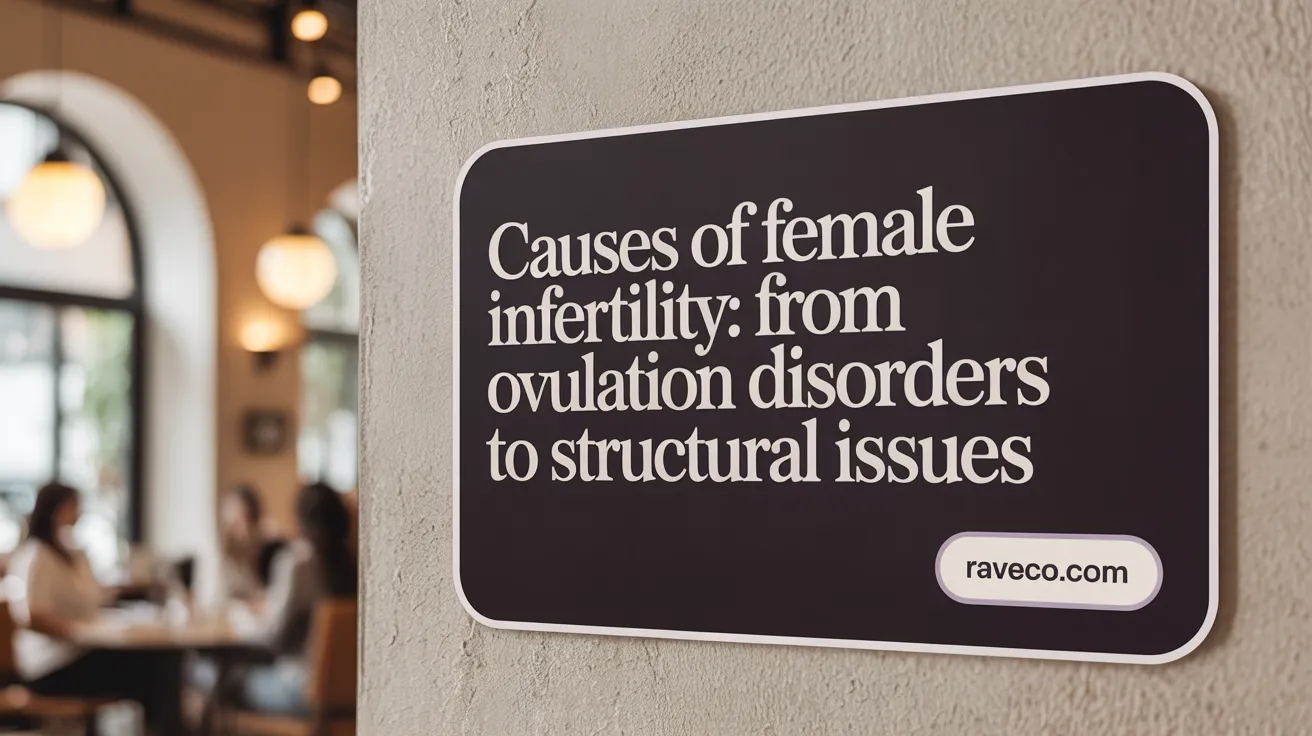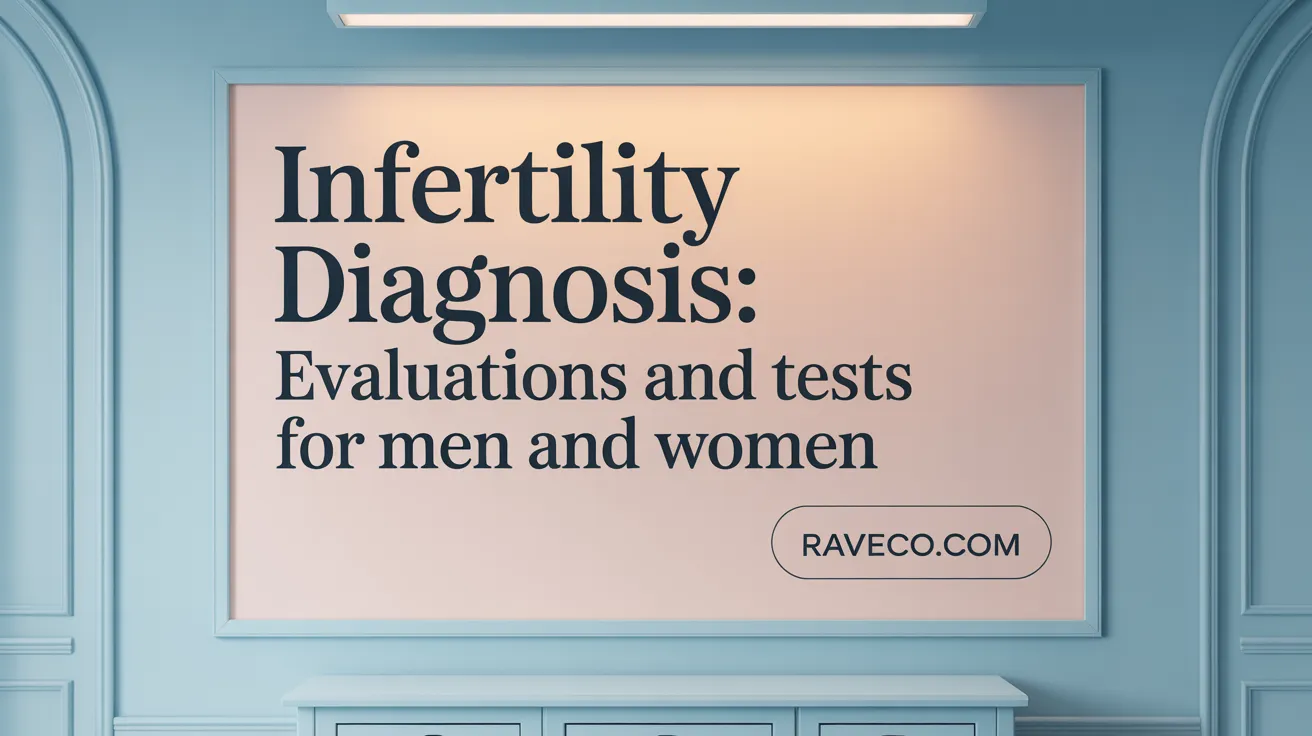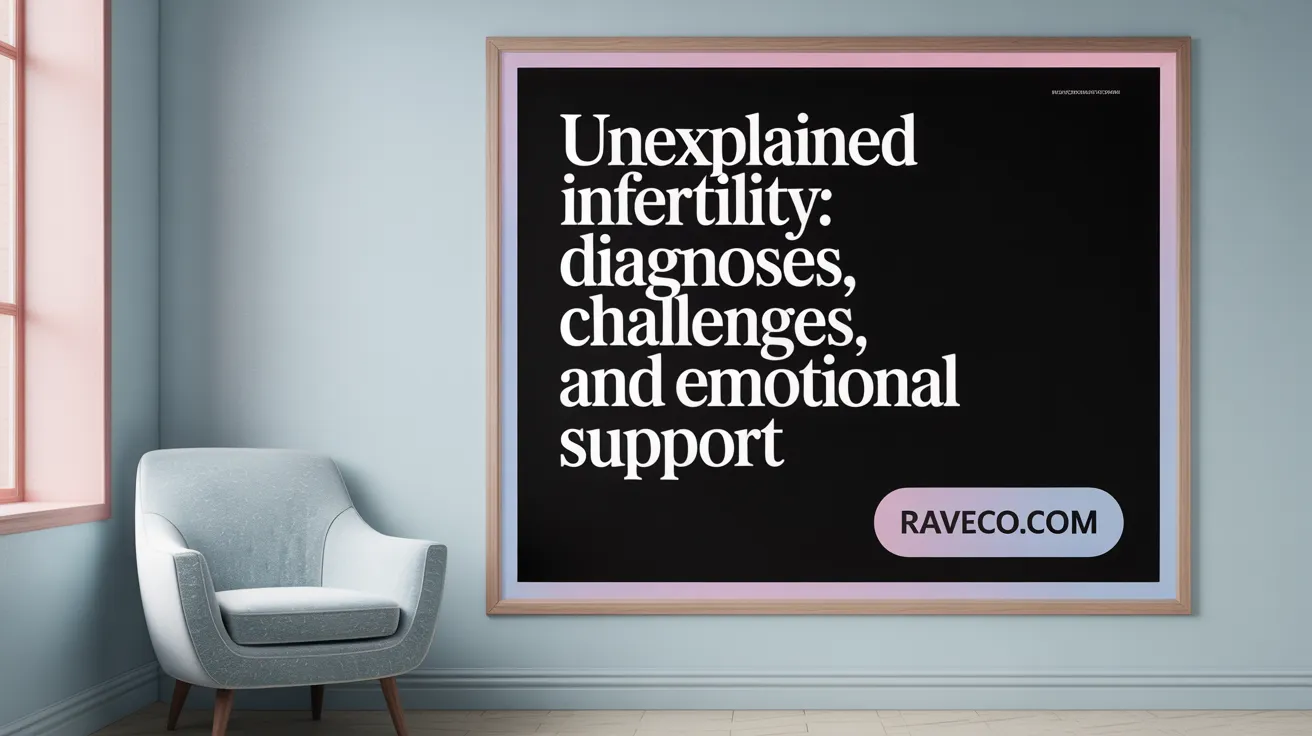Celebrating Courage: 8 Powerful Testimonials of Women's Gynecological Health Triumphs

Understanding the Journey through Infertility
Infertility affects millions worldwide, touching both men and women equally. Defined by the inability to conceive after a specific period of unprotected intercourse—usually one year for women under 35 and six months for those 35 or older—it presents complex challenges. Navigating causes, diagnosis, and treatment is crucial for hopeful couples. This article delves into the intricacies of infertility evaluation, uncovers common causes, and guides when and how to seek professional help, emphasizing evidence-based approaches and the importance of timely intervention.
Defining Infertility and Recognizing When to Seek Help

What is the clinical definition of infertility and when should evaluation begin?
Infertility is defined as the inability to conceive after one year of regular, unprotected intercourse for women younger than 35. For women aged 35 or older, evaluation should begin after six months of unsuccessful attempts. Women over 40 are advised to consult a fertility specialist immediately because fertility declines more rapidly with advancing age.
When should couples seek evaluation based on age?
- Under 35 years: Seek evaluation after one year of trying without pregnancy.
- 35 to 40 years: Seek evaluation after six months.
- Over 40 years: Immediate consultation is advised.
What key risk factors prompt earlier evaluation?
Certain conditions warrant sooner medical attention regardless of age:
- Irregular or absent menstrual cycles
- History of endometriosis or pelvic inflammatory disease
- Previous pelvic surgeries or tubal ligations
- Two or more miscarriages
- Male partner issues such as abnormal semen analysis or sexual dysfunction
Emotional and psychological impact of infertility
Infertility can be a deeply stressful experience that affects emotional well-being. Feelings of anxiety, depression, and frustration are common, as couples face uncertainty and challenges in starting a family. Early consultation helps not only with diagnosis and treatment but also provides access to supportive resources to manage the emotional implications of infertility.
Recognizing when to seek help can lead to earlier diagnosis, effective treatment, and better outcomes both physically and emotionally.
The Complex Causes of Infertility in Women

What are the common causes of female infertility?
Female infertility arises from several complex causes affecting various aspects of reproductive health. One primary cause is ovulation disorders, which account for about 25-40% of cases. Conditions such as polycystic ovary syndrome (PCOS) disrupt hormone balance and prevent regular ovulation. Primary ovarian insufficiency (POI) and hypothalamic dysfunction also impair the release or quality of eggs.
Structural abnormalities significantly contribute to infertility. Blocked or damaged fallopian tubes, often due to pelvic inflammatory disease (PID), sexually transmitted infections, or prior pelvic surgery, prevent egg and sperm from meeting. Uterine fibroids, especially those distorting the uterine cavity, can hinder implantation or cause miscarriage. Endometriosis, where uterine-like tissue grows outside the uterus, leads to scarring and inflammation that interfere with ovarian function, fallopian tube patency, and embryo implantation.
Autoimmune conditions and thyroid disorders also play roles. For example, hypothyroidism can disrupt menstrual cycles and ovulation, while certain autoimmune diseases may cause inflammation or attack reproductive tissues, reducing fertility.
Age is another critical factor. Fertility naturally declines with advancing age, particularly after 35, due to diminished egg quantity and quality, making conception more difficult and increasing miscarriage risk.
Lifestyle factors further impact fertility. Smoking damages reproductive organs and accelerates ovarian aging. Obesity and extreme weight changes disrupt hormone levels and ovulation. High stress and exposure to environmental toxins can also impair fertility.
Understanding and addressing these diverse causes are central to effective diagnosis and treatment of female infertility.
Understanding Male Infertility: Causes and Symptoms
What are the primary causes and signs of male infertility?
Male infertility often stems from issues in sperm production or function. This includes a low sperm count, poor swimming ability (motility), and abnormal sperm shape (morphology. Such abnormalities reduce the chances of fertilization.
A common physical cause is varicocele, which is an enlargement of veins in the scrotum. This raises the temperature around the testes, negatively affecting sperm quality and production.
Hormonal imbalances involving testosterone or other reproductive hormones can also impair fertility. Genetic disorders and chromosomal abnormalities contribute to some cases, impacting sperm production or function (source).
Symptoms that may indicate male infertility include:
- Erectile dysfunction or ejaculatory difficulties
- Changes in body or facial hair growth
- Pain, swelling, or lumps in the testicular area
- Reduced semen volume or abnormal ejaculation (source)
How do lifestyle choices affect male fertility?
Lifestyle factors have a significant impact on sperm health. Smoking tobacco and excessive alcohol use can harm sperm quality. Obesity affects hormone levels, leading to lower sperm count and motility (source).
Exposure to environmental heat—such as frequent use of hot tubs, tight clothing, or hot work environments—raises scrotal temperature and damages sperm production (source).
Certain medications and recreational drugs like anabolic steroids, cannabis, and cocaine also impair sperm quality.
Maintaining a healthy lifestyle by avoiding harmful substances and minimizing heat exposure can improve chances of conception (source.
| Cause Type | Examples | Effect on Fertility |
|---|---|---|
| Sperm Production | Low count, poor motility, abnormal shape | Reduced ability to fertilize egg |
| Physical Condition | Varicocele | Raises testicular temperature, harms sperm quality |
| Hormonal Factors | Low testosterone, hormonal imbalances | Decreased sperm production |
| Genetic Factors | Chromosomal abnormalities | Impaired sperm development |
| Lifestyle Influences | Smoking, alcohol, obesity, heat exposure | Negative impact on sperm quality and count |
Understanding these causes and recognizing symptoms are crucial for timely diagnosis and treatment of male infertility (source.
Diagnostic Steps: Comprehensive Evaluation for Infertility

What are the essential components of infertility evaluation?
Infertility evaluation starts with a detailed medical and sexual history and physical examination of both partners to identify possible contributing factors.
Female-focused tests
Women undergo a series of assessments including:
- Hormonal tests: Blood tests measuring follicle-stimulating hormone (FSH), luteinizing hormone (LH), progesterone, thyroid-stimulating hormone (TSH), prolactin, and anti-Müllerian hormone (AMH) to evaluate ovulation and ovarian reserve.
- Imaging: Pelvic ultrasound examines ovaries and uterus; hysterosalpingogram (HSG) uses X-rays to check if fallopian tubes are open.
- Endoscopic procedures: Hysteroscopy provides a direct look inside the uterine cavity for abnormalities; laparoscopy inspects pelvic organs to detect endometriosis, adhesions, or tubal blockages.
Ovulation tracking is integral and can involve basal body temperature monitoring, urine tests detecting the LH surge, and serum progesterone measurement to confirm ovulation.
Male-focused tests
Evaluation begins with semen analysis assessing sperm count, motility, and morphology. Hormonal assays test testosterone and other relevant hormones. Imaging such as scrotal ultrasound may identify structural issues like varicocele. In some cases, genetic tests or testicular biopsy are employed to investigate severe sperm production disorders.
Interpreting diagnostic results and unexplained infertility
While most causes of infertility can be identified by these evaluations, about 15-30% of couples do not receive a clear diagnosis and are classified as having unexplained infertility. This diagnosis underscores the complexity of reproductive biology and often guides the choice of treatment approaches.
When to Consult a Fertility Specialist: Guidelines and Considerations

When should couples seek specialist fertility consultation?
Couples are generally advised to consult a fertility specialist after one year of trying to conceive without success if the woman is under 35. For women aged 35 or older, evaluation should begin after six months. Immediate consultation is recommended for women over 40 or those with significant symptoms or risk factors. For more details, see When to see a fertility specialist.
What are the key clinical signs warranting early consultation?
Early consultation is important if the woman has irregular or absent menstrual cycles, recurrent miscarriages, or known fertility conditions such as endometriosis or polycystic ovary syndrome (PCOS). A history of pelvic inflammatory disease or prior pelvic surgeries, including tubal ligation or cancer treatments affecting reproductive health, also warrants prompt evaluation. Men should seek earlier evaluation if they experience symptoms such as low sperm count, erectile dysfunction, or testicular injury. More information can be found at Signs of infertility and when to seek help and Early evaluation for infertility.
Why is testing both partners important?
Infertility affects both men and women nearly equally; therefore, comprehensive assessment of both partners is crucial. Testing includes semen analysis for men and hormonal and imaging studies for women. Early identification of contributing factors in either partner enables tailored treatment plans and improves outcomes. Refer to Infertility testing procedures and Infertility evaluation guidelines for in-depth insights.
What specialists are involved in evaluations?
Initial fertility evaluation is often conducted by an obstetrician-gynecologist. For more complex cases, reproductive endocrinologists (specialists in female reproductive health) and urologists (specialists focusing on male reproductive issues) provide advanced diagnostic testing and management strategies. Learn more about specialist roles at Roles of reproductive endocrinologists and urologists and When to see a fertility specialist.
How do chronic conditions and reproductive history impact consultation timing?
Women with chronic medical disorders like thyroid disease, diabetes, or those with previous cancer treatments should seek early specialist input. Similarly, a history of pelvic infections, surgeries, or multiple miscarriages necessitates earlier assessment and intervention to optimize fertility outcomes. Additional information is available at Impact of chronic medical conditions on fertility and Managing chronic health conditions and fertility.
Treatment Pathways: Tailored Strategies for Infertility Management
What treatment options are available for infertility?
Treatment of infertility is highly personalized and depends on the root cause. A range of options exists to improve the chances of conception in both men and women. For detailed information on infertility treatment options, see the Cleveland Clinic resource.
Lifestyle Modifications
Adopting healthy lifestyle changes is often the first recommended step. This includes achieving and maintaining a healthy weight, quitting smoking, limiting alcohol intake, and avoiding exposure to environmental toxins that may impair fertility. Such changes support natural fertility and can enhance treatment outcomes. Learn more about lifestyle factors affecting fertility.
Medications
For women with ovulatory disorders, medications such as clomiphene citrate, letrozole, and gonadotropins are commonly used to induce ovulation. In men, treatments may include medications that enhance sperm production and quality, addressing hormonal imbalances or other reversible issues. Information about medications for infertility treatment is available from ACOG.
Surgical Interventions
Surgical options address structural abnormalities adversely affecting fertility. In women, surgeries can correct tubal blockages, remove fibroids or endometriosis tissue, and repair uterine abnormalities. In men, varicocele repair or procedures to resolve blockages can improve sperm parameters. For details on surgical treatment for infertility visit the NHS site.
Assisted Reproductive Technologies (ART)
ART is employed when conventional therapies are insufficient. Intrauterine insemination (IUI) introduces sperm directly into the uterus around ovulation. In vitro fertilization (IVF) involves fertilizing eggs in a laboratory, then transferring embryos to the uterus. Intracytoplasmic sperm injection (ICSI) injects a single sperm into an egg, particularly useful in male factor infertility. Detailed descriptions of ART methods can be found on the Cleveland Clinic website.
Risks Associated with Treatments
While fertility treatments boost conception chances, they carry risks. These include multiple pregnancies, ovarian hyperstimulation syndrome (an excessive response to ovulation-stimulating drugs), ectopic pregnancy, and occasional treatment cycle failure. Careful monitoring and individualized protocols minimize these risks. For information about risks and complications of infertility treatments, see the NHS guide.
Selecting the most appropriate treatment pathway involves thorough evaluation, often combining strategies to maximize success while mitigating risks. More on choosing fertility treatments is available from the American Academy of Family Physicians.
Preventing Infertility: Lifestyle and Health Strategies
How can infertility be prevented or its risk reduced?
Preventive strategies to reduce infertility risk include several lifestyle and health approaches. Maintaining a healthy weight through balanced physical activity is crucial, as both overweight and underweight conditions can impair fertility. Avoiding tobacco smoking, excessive alcohol intake, and substance abuse further supports reproductive health in both men and women (Lifestyle factors affecting fertility).
Prompt diagnosis and treatment of sexually transmitted infections (STIs) are essential to prevent damage to reproductive organs, particularly fallopian tube scarring that can lead to infertility (Infertility causes. Reducing exposure to environmental toxins, including chemicals and radiation, helps protect sperm and egg quality. Men should avoid prolonged exposure to high testicular temperatures caused by hot environments or tight clothing (Male infertility causes.
In special cases, such as women undergoing chemotherapy or radiation for cancer treatment, fertility preservation methods are recommended. These include freezing eggs, sperm, embryos, or ovarian tissue to allow future family-building opportunities after treatment (fertility preservation options).
Early awareness about fertility health and proactive lifestyle optimization improve the chances of natural conception and support the success of assisted reproductive technologies when needed (Prevention strategies for infertility.
Understanding Unexplained Infertility and Emotional Support

What is unexplained infertility and how is it managed?
Unexplained infertility is a condition where couples cannot conceive despite having normal results from standard fertility tests, including evaluations of ovulation, sperm analysis, and tubal patency. It accounts for about 15-30% of infertility cases globally. This diagnosis is often made after a thorough workup fails to reveal any discernible cause (Understanding unexplained infertility diagnosis).
Diagnostic challenges and further testing options
Because standard evaluations return normal, further specialized testing may be considered, including advanced hormonal panels, detailed semen analysis, enhanced imaging techniques, or exploratory procedures such as laparoscopy (Infertility testing procedures and diagnosis. However, in many cases, no underlying cause is found, making the diagnosis one of exclusion (Diagnosis and Management of Infertility).
Treatment approaches when no cause is identified
Empirical treatment strategies are typically employed. These include ovulation induction combined with intrauterine insemination (IUI) to enhance the chances of fertilization. If these methods are unsuccessful, assisted reproductive technologies (ART) like in vitro fertilization (IVF are recommended. These treatments aim to bypass potential subtle fertility issues not detected by diagnostic testing (Infertility treatment options).
Psychological impact and importance of counseling
The uncertainty surrounding unexplained infertility can cause significant emotional distress including anxiety, depression, and feelings of helplessness. Psychological counseling plays a crucial role in helping couples manage stress and maintain mental well-being during treatment (Emotional impact of infertility.
Support resources for couples facing infertility
Joining support groups and accessing mental health services provide emotional relief and practical advice. Fertility clinics often provide counseling services and direct patients to community support networks to help navigate the challenges of infertility (Support for infertility patients.
Understanding unexplained infertility requires patience and a comprehensive care approach that addresses both medical and emotional needs.
Navigating Infertility: Encouragement and Empowerment
Infertility is a multifaceted condition impacting many couples globally, but advances in diagnosis and treatment offer renewed hope. Understanding when to seek help, recognizing the diverse causes, and embracing a comprehensive evaluation approach is essential. Tailored treatment plans—from lifestyle adjustments to advanced reproductive technologies—enhance the potential for successful conception. Importantly, acknowledging the emotional journey and securing appropriate support fosters resilience during challenges. With timely intervention and informed care, most couples navigate infertility effectively, moving closer to their goals of family building and parenthood.





.png)